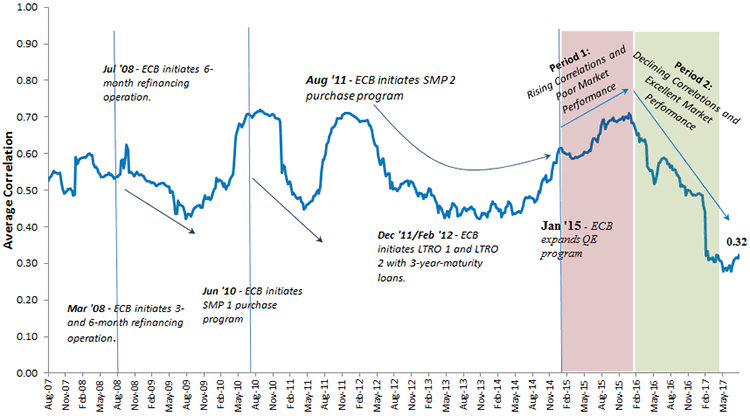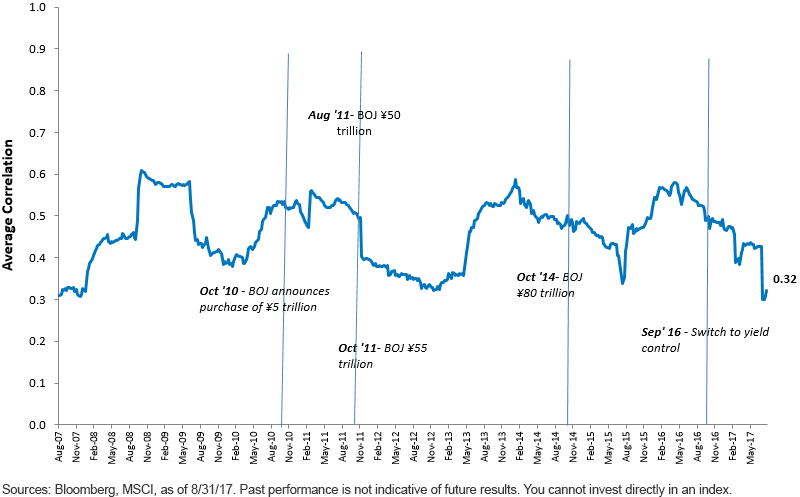I recently wrote in a post how quantitative easing (QE) liquidity world average correlations have been dropping in the U.S. In this analysis, I will take it a step further and highlight how this trend is not just restricted to the U.S.; we see similar patterns globally, especially in Europe and Japan. In addition, I will talk about how investors should account for this while constructing their portfolios.
This pattern also calls into question the conventional narrative that exchange-traded funds (ETFs) are driving correlations higher and leading to systemic risk in the market.
Global Markets Offering Diversification & Potential Returns
While in the U.S. we are already on a rate hike trajectory, if we look globally, rates are still at their all-time lows. Ten-year yields in the developed world continue to be much lower compared to the U.S., barring a few exceptions like Australia.1
This is partly because other parts of the world are still coming out of an economic slowdown, with minimal signs of inflation. Thus, global central banks have been supportive of liquidity and fully supporting accommodative policies, while the U.S. is reducing its extraordinary measures of accommodation.
To visualize this interplay of local equities and prevailing average correlations, I plotted charts below for Japan and Europe. The charts plot the average of all possible pair-wise trailing six-month correlations of equities in the MSCI Euro Index for European equities and the Nikkei 225 for Japanese equities.
Eurozone Equity Average Correlations
6 Month – MSCI Euro

Japanese Equity Average Correlations
6 Monthly – Nikkei Index

Thus, falling correlations are not just a U.S. phenomenon—they are happening globally. My takeaways:











Leave A Comment